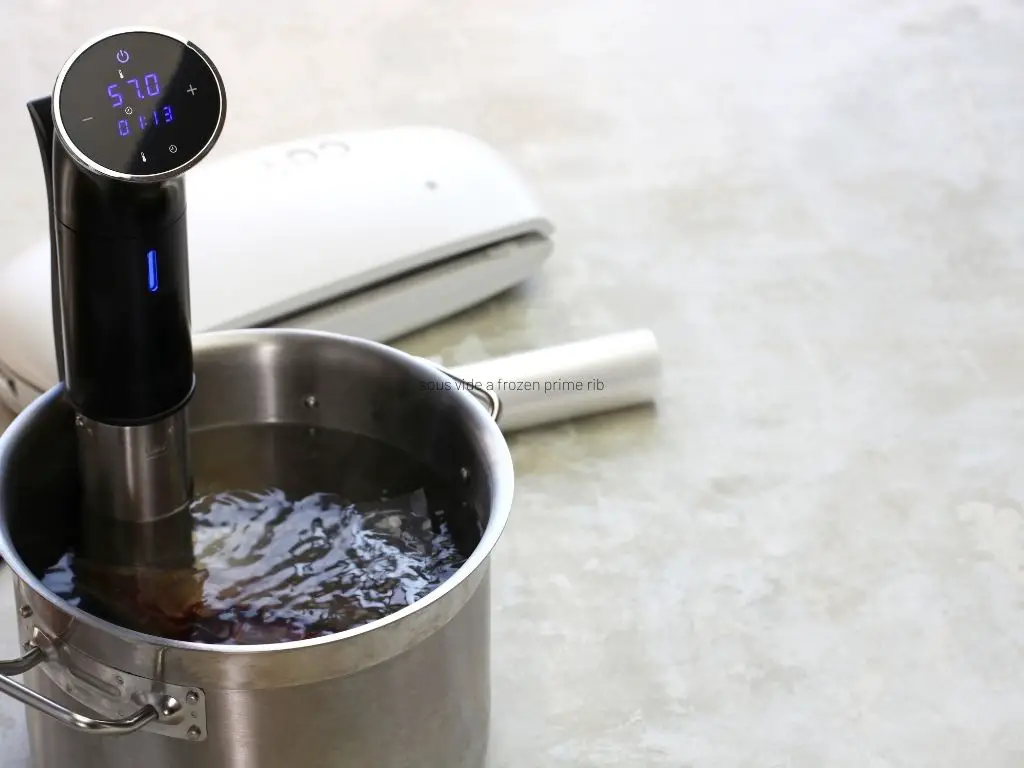Sous vide cooking involves cooking food sealed in plastic pouches in a water bath at precisely controlled temperatures. It results in food that is cooked evenly throughout while retaining moisture and nutrients.
One question that arises with sous vide cooking is how often you need to change the water in the bath. There are several factors that affect the frequency of water changes needed for sous vide cooking.

Sous Vide Products I Use Every Day
As an Amazon affiliate, I earn from qualifying purchases.
Last update on 2024-07-19 / Affiliate links / Images from Amazon Product Advertising API
Factors Affecting the Frequency of Water Changes
1. Cooking Time
The amount of time you cook foods using the sous vide technique affects how often you need to change the water. Longer cooking times allow contaminants and bacteria to accumulate, so more frequent water changes are needed. For short cooking times under 4 hours, you may not need to change the water at all. But for sous vide cooking sessions over 8-12 hours, consider changing the water halfway through cooking. The longer food cooks, the more important fresh water becomes.
2. Type of Food Being Cooked
The type of food you cook sous vide also impacts water change frequency. Foods such as eggs, dairy, meat, fish, and vegetables are more prone to contaminating the water bath since they can release bacteria, oils, juices, and particulates into the water. When cooking these foods sous vide, change the water every 4-8 hours at minimum. Cooking hardy foods like root vegetables and fruit results in less contamination so less frequent water changes may be needed.
3. Water Quality
The quality and composition of your water makes a difference in how rapidly it degrades during sous vide cooking. Hard water high in minerals like calcium and magnesium will lead to scale buildup which provides areas for bacteria to grow. Soft water lacks these minerals but provides less resistance to contamination. To slow degradation, use distilled or filtered water which removes contaminants. Change hard water every 4-6 hours and soft water every 8-10 hours at minimum when cooking sous vide for optimal safety.
4. Sous Vide Container Size
The size of your sous vide cooking container also relates to water change frequency. Small containers concentrate contaminants faster since there is less water dilution. Larger containers allow you to go longer between water changes since the contaminant concentration remains lower. For small 1-5 gallon sous vide cookers, change the water every 4-6 hours. For larger 10+ gallon cookers, you can likely go 8-12 hours between water swaps.
5. Sous Vide Cooking Temperature
Higher temperatures speed up the degradation of the water bath during sous vide cooking. Temperatures above 160°F accelerate the release of contaminants from food. At lower cooking temperatures below 140°F, water can last longer before needing to be changed. Higher temperature cooking for tough meats and vegetables may require water swaps every 4-6 hours, while gentler cooking can sometimes allow up to 12 hours between changes.
Tips for Maintaining Your Sous Vide Water
While water changes are needed periodically in sous vide cooking, there are tips you can use to maximize the lifespan of your water bath and minimize required changes:
1. Use a Lid or Cover to Reduce Evaporation
Evaporation causes water loss which concentrates contaminants faster. Covering your sous vide cooker reduces evaporation so fresh water needs to be added less often.
2. Use a Sous Vide Water Ball to Minimize Heat Loss
The balls limit air exposure and heat loss. This keeps the temperature more consistent so food cooks evenly while also slowing evaporation.
3. Monitor Water Level and Top Off as Needed
Check water level before and during cooking sessions. Top off with hot water to prevent dramatic temperature drops and keep contaminant concentration lower.
4. Clean Your Sous Vide Container Regularly
Grime buildup provides areas for bacteria to thrive. Regular cleaning and sanitizing keeps the water cleaner.
5. Use Distilled or Filtered Water to Improve Water Quality
Removing minerals and contaminants from the water before cooking sous vide keeps the water purer for longer.
6. Store Your Sous Vide Equipment Properly
Drying and storing tools properly between uses stops microbial growth. Storing pouch clamps separately prevents grime buildup.
Conclusion: Balancing Water Changes and Sous Vide Cooking Efficiency
Determining the ideal frequency for changing sous vide water depends on balancing food safety with cooking efficiency. Long cooks, tough foods, small containers, hot temperatures, and poor water quality necessitate more frequent water swaps. Using good practices like filtering water, covering your cooker, and cleaning equipment keeps the bath purer longer. In general, for cooks over 8-10 hours, plan to change the water halfway through cooking time to optimize food safety and sous vide results. With the right precautions, you can minimize the chore of changing water while maximizing the benefits of sous vide cooking.


![IMPRESA [10 pack] Sous Vide Magnets to Keep Bags Submerged & In Place - Sous Vide Accessories to Stop Floating Bags & Undercooking - Great Alternative to Sous Vide Weights, Balls, Clips, & Racks](https://m.media-amazon.com/images/I/41zHpl8G2lL._SL160_.jpg)


